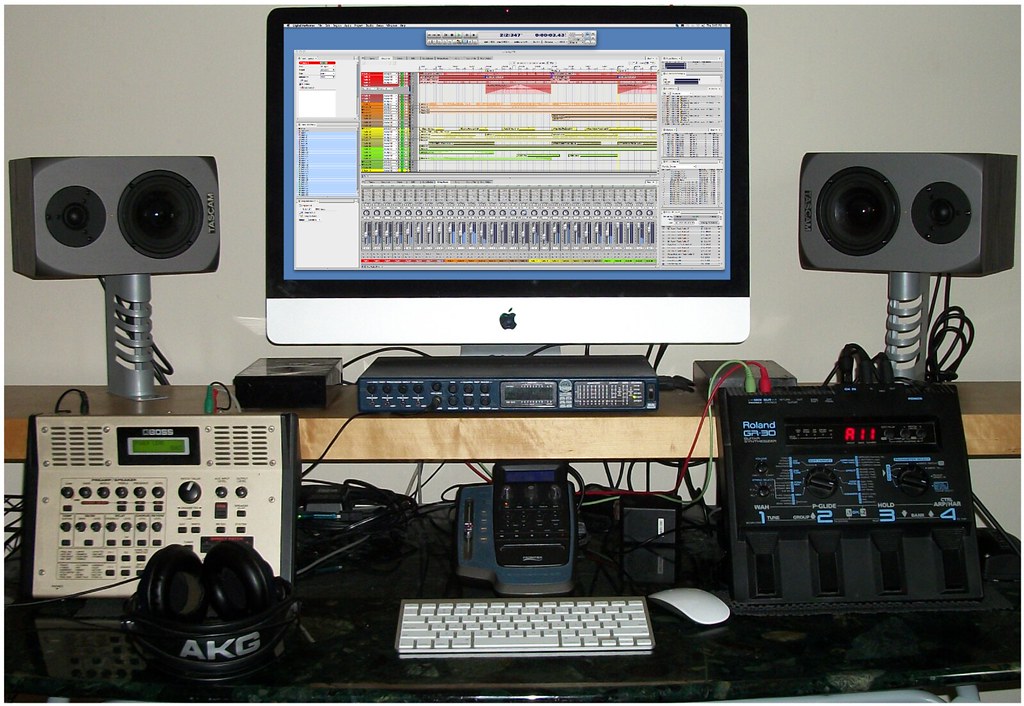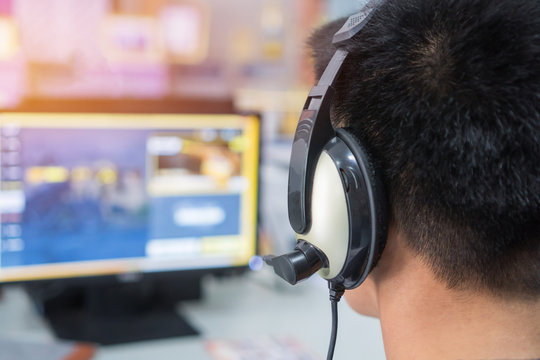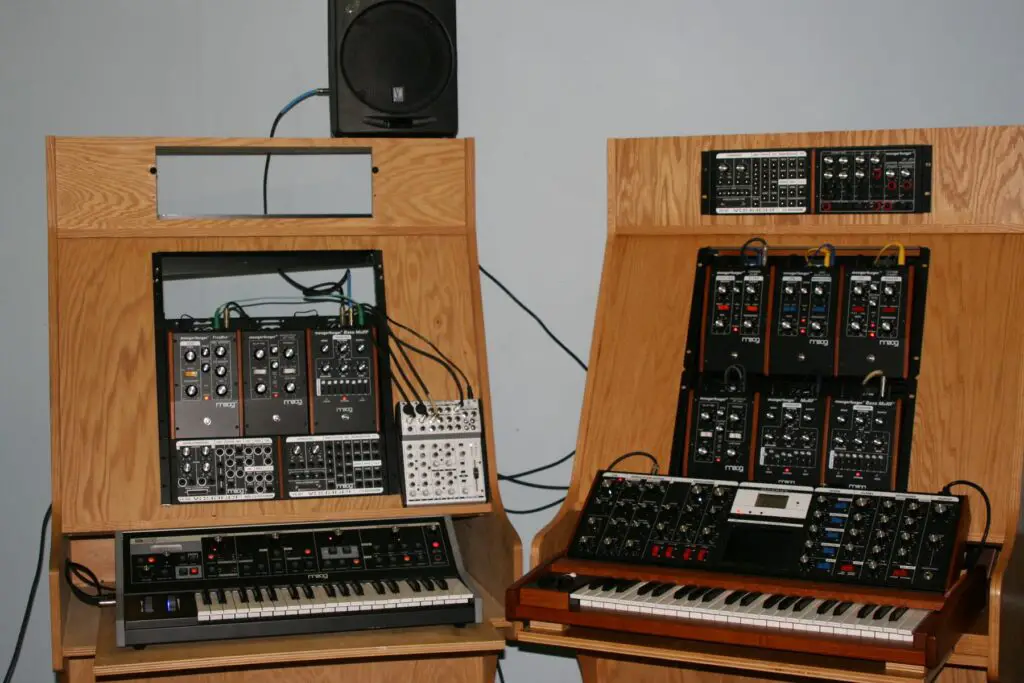Are you a music enthusiast with a passion for creating your own tracks? Do you aspire to become a music producer but don’t know where to start? Learning music production on your own can seem daunting, but fear not, as it is definitely achievable. In this comprehensive guide, we’ll take you through the steps of becoming a self-taught music producer. From selecting the right tools to mastering your craft, we’ll provide all the necessary information and tips to help you kickstart your journey towards producing professional-quality tracks. So let’s dive in and explore the exciting world of music production!
Table of Contents

Introduction to Music Production: Can You Learn It On Your Own?
Learn music production on your own with the help of this comprehensive guide. Music production involves the creation, recording, mixing, and mastering of audio tracks using a combination of technical and creative skills. While traditional music schools offer specialized courses in this field, it is also possible to learn it at home through various online resources.
One benefit of learning music production on your own is that you have the freedom to explore different genres and experiment with unique sounds without any external pressure or constraints. However, one challenge is that you may lack access to professional-grade equipment and guidance from experienced mentors.
Nevertheless, if you are passionate about music and willing to invest time into self-learning, then there’s no reason why you can’t become a skilled DIY music producer. In the following sections of this guide, we will cover everything from essential equipment setups to advanced sound processing techniques that will make your tracks stand out from the crowd!

The Benefits and Challenges of Learning Music Production on Your Own
Benefits and Challenges of Learning Music Production on Your Own
Learning music production on your own can be a rewarding experience, but it also comes with its own set of challenges. One of the biggest benefits is the freedom to learn at your own pace and focus on the areas that interest you the most. You can experiment with different techniques and styles without any external pressure or deadlines.
However, self-learning also requires discipline and motivation. Without a teacher or mentor to guide you, it’s easy to get overwhelmed by the vast amount of information available online. It’s important to stay organized and set achievable goals to avoid burnout.
Another challenge is the lack of feedback and critique from experienced professionals. It’s crucial to seek out opportunities for constructive criticism and collaboration with other artists in order to improve your skills.
Overall, learning music production on your own requires dedication, perseverance, and a willingness to constantly learn and grow as an artist. With the right mindset and resources, it’s possible to build a successful career in DIY music production.

Essential Equipment for DIY Music Producers
To start producing music on your own, you need some essential equipment. The first thing you need is a computer with a decent processor and RAM to handle the demands of digital audio workstations (DAWs). A DAW is the software that allows you to record, edit, and mix your music. There are many DAWs available, such as Ableton Live, Logic Pro X, FL Studio, and Pro Tools. You can choose one based on your budget and preferences.
Next, you need a audio interface to connect your computer to external devices such as microphones and instruments. A good audio interface will provide high-quality sound recording and playback. You also need a microphone if you plan to record vocals or acoustic instruments. A midi keyboard or controller is useful for creating melodies and playing virtual instruments.
Other important equipment includes headphones, studio monitors, and cables. Headphones are essential for monitoring your mix in detail while studio monitors provide accurate sound reproduction for mixing purposes. Cables are necessary for connecting all your devices together.
Investing in quality equipment is crucial for producing high-quality music. However, keep in mind that you can always upgrade your gear as you progress in your music production journey.

Setting Up Your Home Studio: Tips and Tricks for Beginners
Home studio is the place where you’ll be spending most of your time producing music. It’s important to create a comfortable and inspiring environment that helps you stay focused and creative. Start by finding a quiet room with good acoustics, natural light, and enough space for your equipment. Invest in quality studio monitors and headphones to ensure accurate sound reproduction. You’ll also need a computer with enough processing power, RAM, and storage to run your digital audio workstation (DAW) smoothly. Consider getting a MIDI keyboard, drum pad, or other controllers to make music creation more intuitive and fun. Finally, organize your cables, power strips, and accessories neatly to avoid clutter and distractions. With these tips in mind, you can set up a home studio that suits your needs and budget.
Understanding Sound Recording and Audio Processing Techniques
To produce high-quality music, you need to understand the basic principles of sound recording and audio processing. Recording techniques play a crucial role in capturing the right sound at the source, while audio processing techniques help shape and enhance the final mix.
Firstly, it’s important to choose the right microphone for your instrument or voice. Condenser microphones work well for vocals, acoustic guitars, and other acoustic instruments. Dynamic microphones are suitable for drums, electric guitars, and basses.
Secondly, learning how to use EQ (equalization) can help balance frequencies in a mix. Cutting unwanted frequencies with an EQ can make a track sound less muddy while boosting certain frequencies can add clarity.
Thirdly, compression is used to control volume levels of individual tracks within a mix by reducing dynamic range. This makes quiet sounds louder while keeping loud sounds under control.
Lastly, understanding reverb helps create space around individual tracks within a mix by adding artificial reflections that simulate different environments such as concert halls or smaller rooms.
By mastering these basic concepts of recording and audio processing functions like vocal mixing become easier giving you complete control over producing great sounding music on your own!
Creating Beats, Melodies, Basslines, and Chords from Scratch
Music theory is the foundation of creating any type of music. You don’t have to be a virtuoso musician to produce great tracks, but having a basic understanding of chords, scales, and rhythm will help you create more complex and interesting compositions. Experiment with different chord progressions and melodies until you find something that sounds good to you.
Sampling is another popular technique used by many producers. It involves taking small snippets of existing songs or sounds and incorporating them into your own tracks. This can be a great way to add texture and depth to your music.
When it comes to drum programming, there are endless possibilities. You can use pre-made drum loops or create your own patterns using MIDI controllers or virtual drum machines. Don’t be afraid to experiment with different rhythms and percussion instruments.
Finally, basslines are an essential component of many genres of music. Whether you’re creating a driving techno track or a mellow hip-hop beat, a strong bassline can tie everything together. Try experimenting with different bass sounds and patterns until you find something that complements your other elements well.
Using Digital Audio Workstations (DAWs) to Enhance Your Workflow
Digital Audio Workstations (DAWs) are essential tools for modern music production. They allow you to create, edit, and arrange audio and MIDI clips in a visual interface that resembles a traditional mixing console. Popular DAWs like Ableton Live, Logic Pro X, FL Studio, and Pro Tools offer various features such as virtual instruments, effects plugins, sample libraries, and automation controls that can help you craft unique sounds.
When choosing a DAW, consider your goals, workflow preferences, budget constraints, and compatibility with your computer system. You may want to experiment with different software trials before committing to one.
To enhance your productivity in the studio, take advantage of keyboard shortcuts or control surfaces such as MIDI controllers and faders. Explore built-in tutorials or online resources such as YouTube channels or forums from experienced producers who share tips on how to use advanced techniques.
Remember that while technology can be helpful, it’s ultimately up to your creativity when producing music. Don’t get overwhelmed by the gear; focus on refining your artistic vision instead!

Mixing and Mastering Strategies for Professional-Sounding Tracks
The Art of Balancing: Tips for Achieving a Well-Mixed Track
To achieve a well-mixed track, balancing is key. This involves adjusting the levels of each individual track to ensure they blend together seamlessly. Start by setting the levels of your drums and bassline, as these are the foundation of your track. Then, bring in other elements such as synths and vocals, making sure they don’t overpower the mix. Use panning to create space and depth in your mix, and EQ to cut out any unwanted frequencies that may clash with other elements. Finally, use compression to even out the levels and add cohesion to your mix. Remember, practice makes perfect!
Mastering Techniques: Maximize the Impact of Your Music
The process of mastering is essential in polishing your tracks to make them sound professional and ready for distribution. To get the best results, you need to have a clear understanding of EQ (Equalization) and compression techniques which are key elements in balancing and enhancing the different frequencies present in your mix. You also need to pay attention to stereo imaging, loudness levels, and use mastering effects such as limiting or reverb sparingly. To avoid ear fatigue while tweaking settings, take frequent breaks between sessions. It’s important to note that mastering should be done only after you’ve completed mixing all elements within each track.
Using EQ to Create Space and Depth in Your Mixes
When mixing your tracks, using EQ can help you create a sense of space and depth. Cut away the low frequencies on elements that don’t need them (such as vocals or lead instruments) to make room for the bassline and kick drum. Boosting certain harmonics in a sound can make it more present and stand out in the mix, while cutting others can push it back into the background. Use high-pass filters on non-bass-heavy sounds to reduce muddiness. Additionally, stereo widening techniques like mid/side processing or panning can add width to your mix without overloading it with reverb or delay effects.
Understanding Compression: How to Make Your Tracks Sound Professional
Compression is a key tool in music production that can help bring out the dynamics, clarity, and balance in your tracks. Learning how to use compression effectively can make a huge difference in the overall quality of your productions. By controlling the volume levels of individual instruments or entire mixes, you can achieve a more cohesive and polished sound that stands out from amateur recordings.
Some common strategies for using compression include adjusting attack and release times to shape transients, setting thresholds to control dynamic range, using sidechain techniques to create space for specific elements, and applying parallel compression for extra punch and depth. Experimenting with different settings and combinations of plugins can help you find what works best for your projects.

Getting Feedback, Collaborating with Other Artists, Finding Inspiration
Getting Feedback is crucial for any DIY music producer who wants to improve their skills and create better tracks. One way to get feedback is to share your music with friends, family, and other musicians in online communities or social media groups. You can also attend local events or open mic nights to network with other artists and get feedback from a live audience.
Collaborating with Other Artists can also be a great way to learn new techniques, gain exposure, and expand your creative horizons. Look for other musicians who share your interests and style, and reach out to them to see if they would be interested in working together on a project. You can also join online collaboration platforms or attend music production workshops and events to meet like-minded individuals.
Finding Inspiration is another important aspect of DIY music production. Whether it’s listening to your favorite artists, exploring new genres, or experimenting with different sounds and instruments, it’s important to stay curious and open-minded. Don’t be afraid to try new things and take risks in your music production journey. Remember that creativity is a process, and every step counts towards achieving your goals as a DIY music producer.
Tips for Staying Motivated and Building a Successful DIY Career in Music Production
Staying Motivated is key to success in any field, and this especially holds true for music production. Being a DIY music producer means that you often have to work alone, with no external support or validation. This can be demotivating at times as you might feel like you are not making progress or producing anything worthwhile.
To overcome this challenge, set SMART (Specific Measurable Achievable Realistic Timed) goals and deadlines for yourself. Celebrate small accomplishments along the way, such as completing a track or learning a new technique.
Another great tip is to take frequent breaks from your home studio and engage in other creative activities that energize you. Attend concerts or music events near you, participate in online communities of fellow producers/artists, and collaborate with others to gain fresh perspectives.
Lastly, it’s important to develop an entrepreneurial mindset and adopt business strategies if your goal is to make a career out of your passion. You need to market yourself effectively through social media platforms like SoundCloud and YouTube while building relationships with potential clients/labels/publishers etc., researching industry trends and staying up-to-date on emerging technologies/tools that can enhance your workflow/sound quality.
In conclusion, learning music production on your own is not only possible but also rewarding. With the right mindset, equipment, and resources, you can unleash your creativity and produce high-quality tracks that showcase your unique style and vision. Whether you want to pursue music production as a hobby or a career, there are plenty of opportunities to learn, grow, and connect with other like-minded artists in the digital age.
If you’re interested in exploring more topics related to music production, be sure to check out our other content on our website. From beginner’s guides to advanced techniques, we’ve got you covered with expert insights and practical tips that can help you take your skills to the next level. Thanks for reading, and happy producing!


